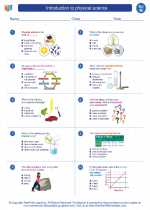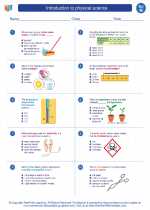State of Matter
The state of matter refers to the physical form in which a substance exists. There are four primary states of matter: solid, liquid, gas, and plasma. Understanding the properties and behavior of each state is fundamental to understanding the physical world around us.
States of Matter
Each state of matter has distinct characteristics:
- Solid: In a solid, particles are tightly packed together and have a fixed shape and volume. They vibrate in place but do not move past each other.
- Liquid: In a liquid, particles are still close together but can move past each other, allowing the substance to flow and take the shape of its container.
- Gas: In a gas, particles are far apart and move freely, filling the entire volume of their container. Gases have no fixed shape or volume.
- Plasma: Plasma is a state of matter in which the particles are highly energized and ionized, resulting in a state that does not have a fixed shape or volume and is electrically conductive.
Changes in State
Matter can change from one state to another by gaining or losing energy. These changes are called phase transitions:
- Melting: The transition from a solid to a liquid state, which occurs when a solid gains enough thermal energy to overcome the forces holding its particles together.
- Freezing: The transition from a liquid to a solid state, which occurs when a liquid loses enough thermal energy for its particles to form a rigid structure.
- Evaporation (or vaporization): The transition from a liquid to a gas state, which occurs when a liquid gains enough thermal energy for its particles to escape into the gas phase.
- Condensation: The transition from a gas to a liquid state, which occurs when a gas loses enough thermal energy for its particles to come together and form a liquid.
- Sublimation: The transition from a solid to a gas state without passing through the liquid state, and deposition is the reverse process. Both occur when a substance gains or loses enough thermal energy to make the transition directly.
Study Tips
When studying the state of matter, it's important to:
.




